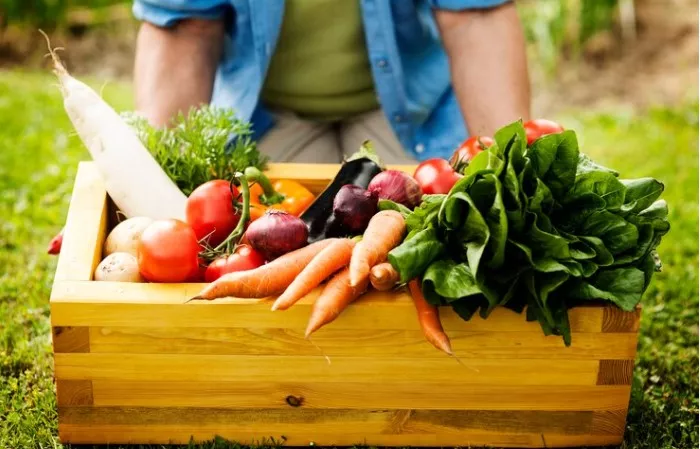In recent years, Zambia has witnessed a burgeoning interest in agriculture, with a particular focus on vegetable farming. This surge is propelled by various factors, including favorable climatic conditions, increasing demand for fresh produce, and government support for the agricultural sector. These are the Most profitable Vegetables to grow in Zambia
For aspiring farmers seeking lucrative ventures, understanding the most profitable vegetables to grow in Zambia can be the first step toward a successful agricultural enterprise. In this article, we delve into a comprehensive list of vegetables ranked from the most profitable to the least, along with the required capital investment and potential profits.
Most profitable Vegetables to grow in Zambia
1. Tomatoes
Tomatoes reign supreme as one of the most profitable vegetables to cultivate in Zambia. With a high demand in both local markets and for export, tomatoes offer excellent revenue potential for farmers. The initial capital investment for tomato farming includes land preparation, seeds or seedlings, irrigation infrastructure, fertilizers, and pesticides. However, with proper management practices and favorable growing conditions, farmers can expect substantial returns. On average, a well-managed tomato farm can yield profits ranging from 50% to 100% of the initial investment.
2. Cabbage
Cabbage cultivation holds significant promise for Zambian farmers due to its versatility in culinary applications and consistent demand throughout the year. Capital requirements for cabbage farming include land preparation, seeds, fertilizers, pesticides, and irrigation systems. With careful attention to pest control and irrigation, cabbage farming can generate returns of 40% to 80% above the initial investment.
3. Onions
Onions are another lucrative crop for Zambian farmers, given their essential role in various cuisines and high demand in local markets. Successful onion farming necessitates investment in quality seeds, land preparation, fertilizers, irrigation, and pest management. While onions require relatively longer growing periods compared to some other vegetables, the potential profits are rewarding, with returns typically ranging from 30% to 70% above the initial investment.
4. Bell Peppers
Bell peppers, known for their vibrant colors and nutritional value, present an attractive opportunity for commercial cultivation in Zambia. Capital requirements for bell pepper farming encompass land preparation, quality seeds, irrigation systems, fertilizers, and pest control measures. With proper care and attention, bell pepper farming can yield profits ranging from 20% to 60% above the initial investment.
5. Spinach
Spinach, valued for its nutrient density and culinary versatility, holds promise for profitable cultivation in Zambia. The capital investment for spinach farming includes land preparation, seeds, fertilizers, irrigation infrastructure, and pest management. Spinach crops typically have shorter growth cycles, allowing for multiple harvests within a season and offering returns of approximately 15% to 50% above the initial investment.
6. Carrots
Carrots are well-suited for Zambian soils and climatic conditions, making them a viable option for profitable vegetable farming. Capital requirements for carrot cultivation involve land preparation, quality seeds, fertilizers, irrigation, and pest control measures. While carrots may require slightly higher initial investments due to soil preparation needs, they offer promising returns, averaging between 10% to 40% above the initial investment.
7. Green Beans
Green beans, prized for their crisp texture and nutritional value, represent a niche opportunity for profitable vegetable farming in Zambia. Capital investments for green bean cultivation include land preparation, seeds, irrigation systems, fertilizers, and pest management. While green beans may entail moderate initial investments, their market demand and potential profits make them a viable option for farmers, with returns typically ranging from 5% to 30% above the initial investment.
Below is a table summarizing the information on the most profitable vegetables to grow in Zambia, including the required capital investment and potential profits after farming for each crop:
| Vegetable | Capital Investment (ZMW) | Potential Profit (Range) (ZMW) |
|---|---|---|
| Tomatoes | K10,000 – K20,000 | K20,000 – K30,000 |
| Cabbage | K6,000 – K15,000 | K15,000 – K25,000 |
| Onions | K7,000 – K18,000 | K18,000 – K28,000 |
| Bell Peppers | K8,000 – K22,000 | K22,000 – K32,000 |
| Spinach | K3,000 – K12,000 | K12,000 – K20,000 |
| Carrots | K3,000 – K15,000 | K15,000 – K25,000 |
| Green Beans | K2,000 – K18,000 | K18,000 – K28,000 |
(Note: All figures are approximate and may vary based on factors such as location, scale of farming, and market conditions.)
This table provides a concise overview of the capital investment required and the potential profit range for each vegetable, offering valuable insights for prospective vegetable farmers in Zambia.
Conclusion
In conclusion, vegetable farming presents a lucrative opportunity for agricultural entrepreneurs in Zambia, with various crops offering promising returns on investment. From tomatoes to green beans, the key to success lies in diligent planning, proper resource allocation, and adherence to best agricultural practices.
READ: The most profitable crop to grow in Zambia
By choosing the right mix of crops based on market demand, climatic suitability, and profitability potential, Zambian farmers can unlock the abundant rewards that the agricultural sector has to offer. With sustained efforts and a commitment to excellence, vegetable farming can not only contribute to individual prosperity but also to the broader goal of food security and economic development in Zambia.

Exceptional…
This is fantastic.
We need our crops to be processed in Zambia especially tomatoes
Great peace of information
I love this information and willing to start up
I want to start farming thanks for the info